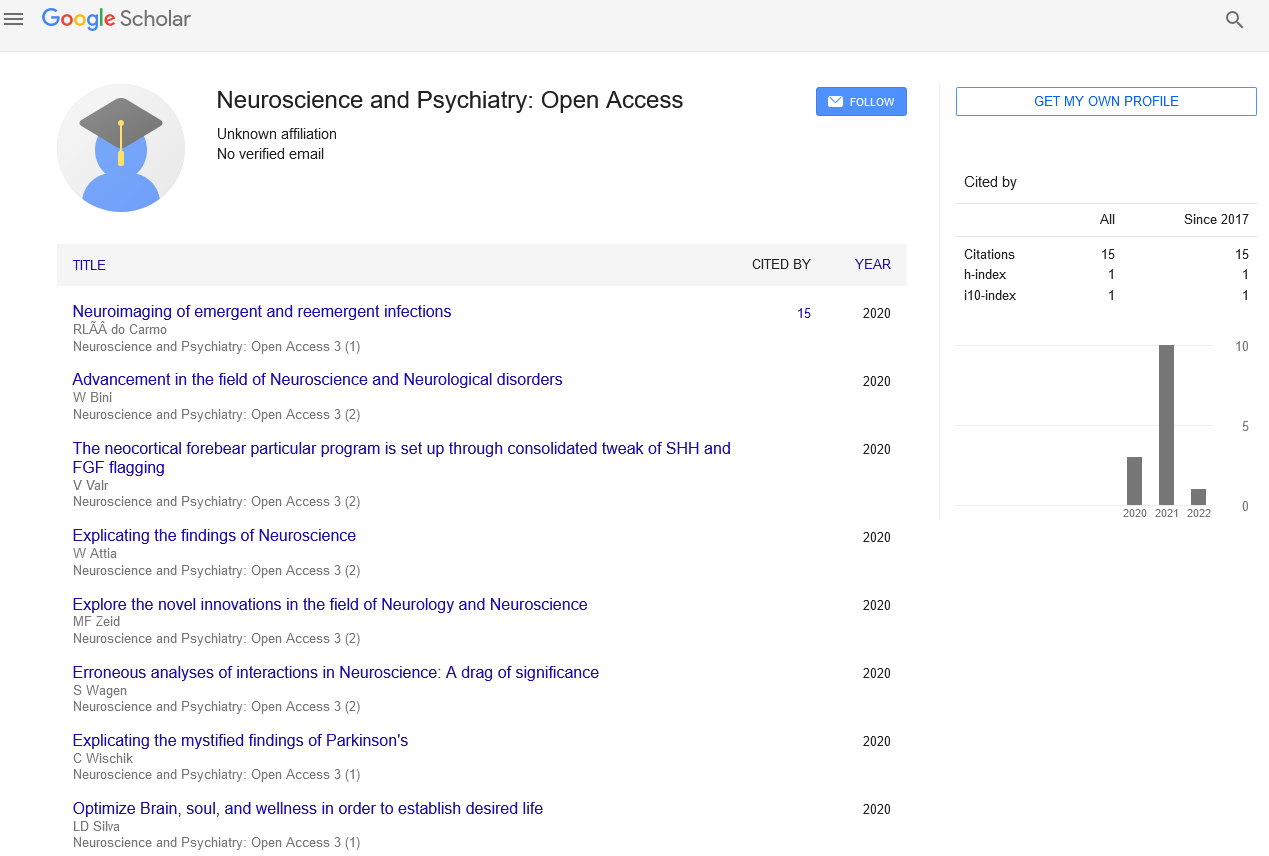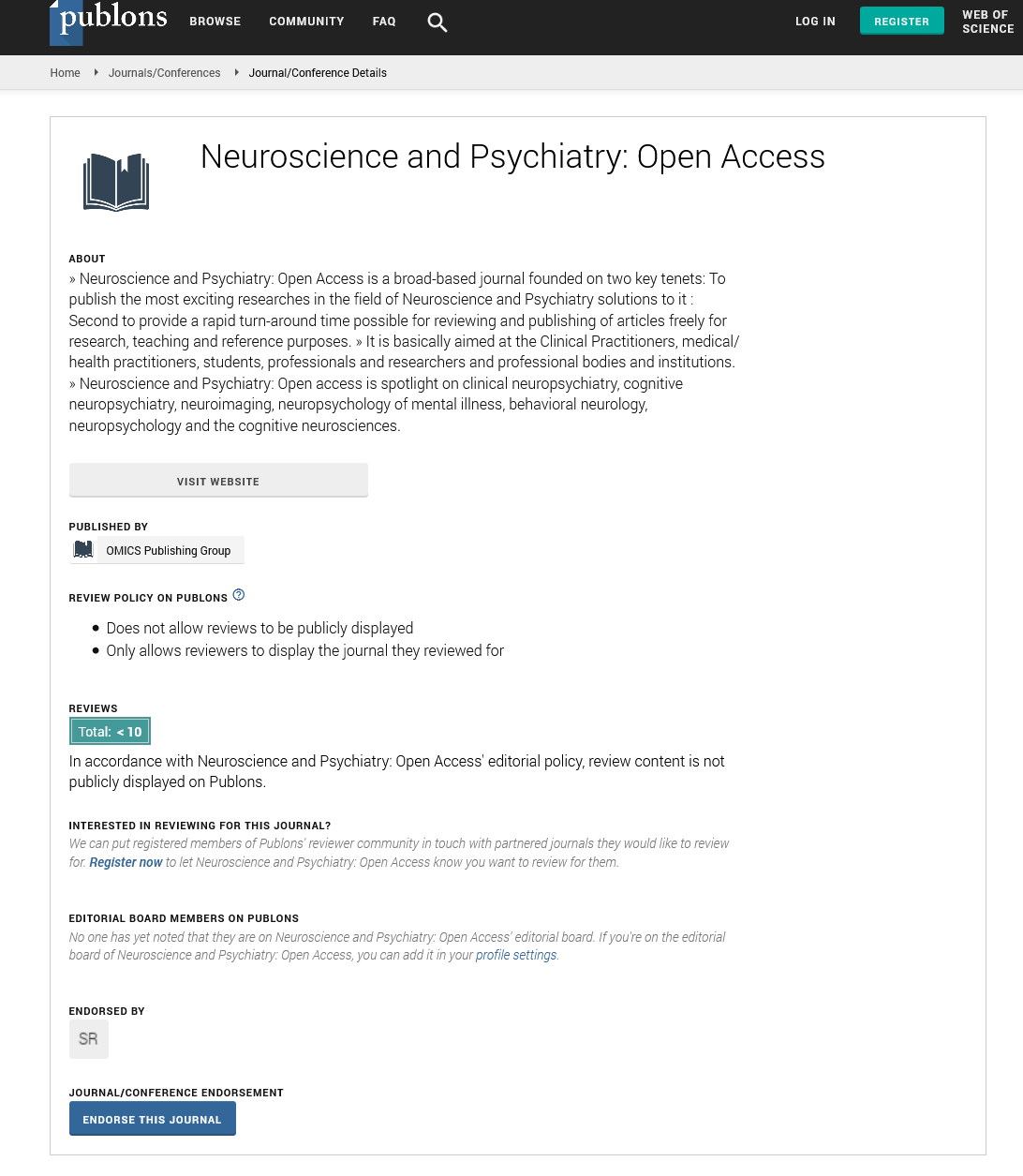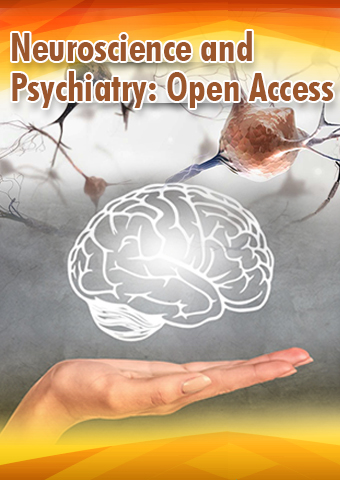Perspective - Neuroscience and Psychiatry: Open Access (2024) Volume 7, Issue 2
Exploring the World of Neuroimaging: Illuminating the Brain's Mysteries
- Corresponding Author:
- Patricia Silveira
Department of Neuroscience, York University, Ontario, Canada
E-mail: patriciasil35@mcgill.ca
Received: 06-02-2024, Manuscript No. NPOA-23-119629; Editor assigned: 09-02-2024, PreQC No. NPOA-23-119629 (PQ); Reviewed: 23-02-2024, QC No. NPOA-23-119629; Revised: 06-03-2024, Manuscript No. NPOA-23-119629 (R); Published: 13-03-2024, DOI: 10.47532/npoa.2024.7(2).183-184
Introduction
The human brain, often referred to as the most complex organ in the body, has intrigued scientists, clinicians, and curious minds for centuries. Understanding the intricate web of neurons and their functions within the brain has been a formidable challenge. Fortunately, the advent of neuroimaging techniques has revolutionized the way we explore and study this mysterious organ. In this article, we will embark on a journey through the fascinating world of neuroimaging, delving into its history, diverse modalities, and the remarkable insights it offers into the workings of the brain. The brain’s complexity the human brain is a three pound marvel that contains around 86 billion neurons, each connected to thousands of others. This intricate network of neurons is responsible for our thoughts, emotions, and behaviors. Understanding the brain’s functions and detecting abnormalities within it has long been a daunting task. The need for visualization for centuries, our understanding of the brain was limited to post-mortem examinations and indirect observations. These methods, though valuable, could not reveal the dynamic processes occurring within a living brain. As a result, researchers yearned for techniques that would enable them to visualize the brain’s structure and activity in real time.
Description
The history of neuroimaging dates back to the early 20th century when X-rays were first used to study the human skull and its contents. While X-rays provided static images of the brain’s structure, they couldn’t capture its dynamic processes. The breakthrough came in 1972 with the invention of Computed Tomography (CT) scanning. CT scans utilized X-rays from various angles to create detailed cross-sectional images of the brain. This allowed for the visualization of brain lesions and provided crucial diagnostic information. Magnetic Resonance Imaging (MRI), introduced in the 1980’s, was a game changer in neuroimaging. It used powerful magnets and radio waves to create detailed, high contrast images of the brain’s soft tissues. Unlike CT scans, MRIs did not involve ionizing radiation, making them safer for patients. Positron Emission Tomography (PET) and Single Photon Emission Computed Tomography (SPECT) PET and SPECT scans made it possible to study brain function. These techniques involve injecting patients with a radioactive tracer and detecting gamma rays emitted during metabolic processes. They have been instrumental in the study of conditions like Alzheimer’s disease and epilepsy.
MRI remains one of the most widely used neuroimaging techniques. It provides detailed images of brain anatomy, revealing structures like the cortex, white matter tracts, and subcortical nuclei. Advanced MRI modalities, such as diffusion weighted imaging and functional MRI (fMRI), offer insights into connectivity and brain activity. CT scans continue to be employed for their speed and availability. While they excel at identifying hemorrhages and tumors, CT scans are less suited for assessing soft tissue details and functional aspects. PET scans use radiotracers to visualize metabolic activity in the brain. They are valuable in oncology, neurology, and psychiatry, helping diagnose conditions like Alzheimer’s disease and mapping neurotransmitter activity. SPECT shares similarities with PET but uses different tracers and has a lower spatial resolution. It remains a valuable tool for diagnosing and monitoring various neurological and psychiatric disorders. fMRI measures changes in blood flow to active brain regions, providing insights into brain function. It has revolutionized our understanding of cognitive processes, emotion, and perception. EEG records the brain’s electrical activity using electrodes placed on the scalp. It is vital for diagnosing epilepsy, studying sleep patterns, and monitoring brain function during surgery.
Neuroimaging plays a critical role in diagnosing and monitoring neurological conditions, including brain tumors, strokes, multiple sclerosis, and neurodegenerative diseases. Cognitive neuroscience fMRI has provided valuable insights into the neural basis of cognitive processes like memory, attention, and decision-making. Psychiatry neuroimaging has illuminated the neural underpinnings of psychiatric disorders, aiding in the development of targeted treatments and reducing the stigma associated with mental health conditions. Neurosurgery preoperative imaging, such as functional MRI and diffusion tensor imaging, helps neurosurgeons plan and execute procedures with precision. Basic research neuroimaging supports basic research by allowing scientists to investigate brain structure, connectivity, and function, contributing to our understanding of neurological and cognitive processes.
Technological advancements ongoing advancements in imaging technology continue to enhance the precision, speed, and accessibility of neuroimaging. Techniques like ultra-high field MRI and Magneto Encephalography (MEG) hold promise for even more detailed brain exploration. The sheer volume of data generated by neuroimaging requires advanced analysis techniques. Machine learning and artificial intelligence play an increasingly important role in interpreting and deriving insights from these datasets. As neuroimaging techniques become more powerful, ethical concerns related to privacy, consent, and the potential misuse of information must be addressed. Global access ensuring equitable access to neuroimaging resources is essential, as these techniques hold potential for improving healthcare worldwide.
Conclusion
Neuroimaging has revolutionized our understanding of the brain and its functions, allowing us to explore its mysteries in unprecedented detail. As technology continues to advance, we can look forward to even greater insights into neurological disorders, cognitive processes, and the profound intricacies of the human brain. By embracing the evolving world of neuroimaging, we move one step closer to unraveling the complexities of the brain and improving the lives of those affected by neurological conditions.


